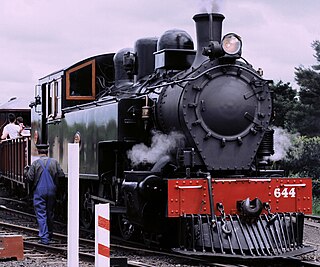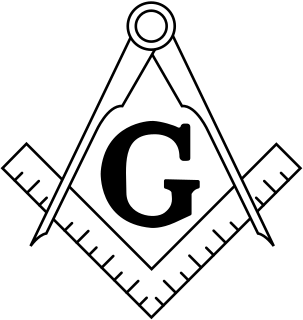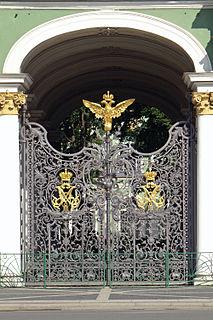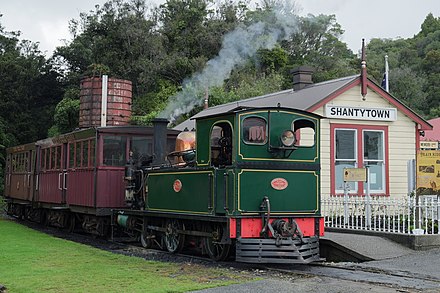
Kaitangata is a town near the coast of South Otago, New Zealand, on the left bank of the Clutha River ten kilometres south east of Balclutha. The town is known to its residents simply as Kai.
The Canterbury Railway Society is an organisation of railway enthusiasts based in the Canterbury region of New Zealand's South Island, best known for their operation of The Ferrymead Railway at the Ferrymead Heritage Park.

Grey District in the West Coast Region of New Zealand is a municipality that covers Greymouth, Runanga, Blackball, Cobden and settlements along the Grey River. It has a land area of 3,516.48 square kilometres (1,357.72 sq mi). The seat of the Grey District Council, the local government authority that administers the district, is at Greymouth, where 27% of the district's population live.

The New Zealand F class was the first important class of steam locomotive built to operate on New Zealand's railway network after the national gauge of 3 ft 6 in was adopted. The first locomotives built for the new gauge railways were two E class double Fairlies for the Dunedin and Port Chalmers Railway. The F class was the first class ordered by the Central government, and between 1872 and 1888, a total of eighty-eight members of the class were constructed.

The Ocean Beach Railway (OBR) is a heritage railway that operates in Dunedin, New Zealand. It is located between John Wilson Drive in the suburb of Saint Kilda and sports grounds near Forbury Park Raceway, and runs parallel with the city's main beach, Ocean Beach. This is near where the Ocean Beach Branch once ran, but not on the same formation.

The Plains Vintage Railway & Historical Museum is a heritage railway and recreated historic village located inside the Tinwald Domain, Tinwald, New Zealand. The railway operates on approximately three kilometres of rural railway line that once formed part of the Mount Somers Branch. The entire village site and the railway are open regularly to the public, the railway operation utilises preserved and restored locomotives and rolling stock once used on New Zealand's national railway network while the village allows people to see how life was lived in New Zealand's pioneering past.

Tweetsie Railroad is a family-oriented Wild West theme park located between Boone and Blowing Rock, North Carolina, United States. The centerpiece of the park is a 3-mile (4.8 km) ride on a train pulled by one of Tweetsie Railroad's two historic narrow-gauge steam locomotives. The park also features a variety of amusement rides, live shows, a zoo and other attractions geared towards families with children. The park also hosts a variety of special events throughout the year including Halloween and Christmas themed events.

The Mainline Steam Heritage Trust is a New Zealand organisation devoted to the restoration and operation of historic New Zealand Railways mainline steam locomotives. Regular day excursions and multi-day tours are operated over rail lines throughout New Zealand. These excursions provide travellers with the unique opportunity to relive the days when steam was king while experiencing the magnificent New Zealand countryside. Excursions are operated by the Auckland, Wellington and Christchurch branches.

The Midland line is a 212 km section of railway between Rolleston and Greymouth in the South Island of New Zealand. The line features five major bridges, five viaducts and 17 tunnels, the longest of which is the Otira tunnel.
The Ross Branch, officially known as the Hokitika Line since 2011, and previously as the Hokitika Industrial Line, is a branch line railway that forms part of New Zealand's national rail network. It is located in the Westland District of the South Island's West Coast region and opened to Hokitika in 1893. A further extension to Ross operated from 1909 until 1980.
Steam Incorporated, often abbreviated to Steam Inc., is a railway heritage and preservation society based at the Paekakariki Railway Station, Paekakariki at the southern end of the Kapiti Coast, approximately 50 minutes north of Wellington on the west coast of New Zealand's North Island. Unlike some societies who operate on preserved sections of closed branch lines, Steam Incorporated own a depot beside one of the country's most important railway lines, the North Island Main Trunk Railway, and restores heritage locomotives and rolling stock for use on excursions on the regular national rail network.
The Rewanui Branch, sometimes referred to as the Rewanui Incline and known as the Point Elizabeth Branch in its early years, was a branch line railway located in the West Coast region of New Zealand's South Island. It branched from the Midland Line near its western terminus in Greymouth and ran up to Rewanui in the Paparoa Ranges. The branch closed in 1985 but the first six kilometres to Runanga remain in operation as part of the Rapahoe Branch.
A & G Price Limited was an engineering firm and locomotive manufacturer in Thames, New Zealand, from 1868. In 2004 a precision formed yacht keel division was formed to make the Maximus canting keel. A few months short of 150 years after it was founded it was put into liquidation on 26 July 2017. About 100 employees lost their jobs. The liquidated company was bought as a going concern and continues to operate as A & G Price.

Paroa is a settlement on the West Coast of the South Island of New Zealand, just south of Greymouth. State Highway 6 and the Hokitika Branch railway both run through Paroa. This railway was originally a bush tramway that opened to Paroa from Greymouth in 1867 and was extended to Kumara in 1877. It was converted into a railway in 1893, and this time, ran from Paroa to Hokitika rather than Kumara.
The Waitara Railway Preservation Society is a society established in 1999 to operate a heritage railway over the former Waitara Industrial Branch Railway that operated between Lepperton and Waitara in the New Plymouth District of New Zealand's North Island. The line had been closed that year after 124 years of operation, after the closure of the local AFFCO freezing works in the town.

The NZR WW class was a class of 4-6-4T tank locomotives that operated on the New Zealand national railway network. They were the final development of the six coupled tank engine in New Zealand, the penultimate class of tank locomotives to be built for NZR, and the first class of tank locomotives to be built with superheaters.
The Ohai Railway Board Heritage Trust is a defunct railway preservation society that was formed to preserve Southland's rail history. The trust was formerly based at Wairio on the Wairio Branch in the former Ohai Railway Board workshops, and owned a number of locomotives and items of rolling stock, including the remains of two P class 2-8-0 tender locomotives.
The Wellington Heritage Multiple Unit Preservation Trust was formed to preserved D 2130, DM 556 and D 2411 or otherwise known as the "Cyclops" EMU set. The trust is based at Maymorn near the Rimutaka Incline Railway Heritage Trust. The set was purchased in January 2013 and arrived at their base on 21 April the same year.





















